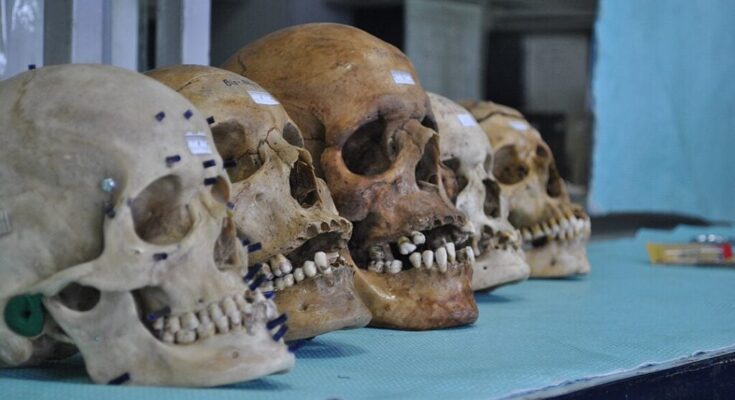
Recently, interest has grown in computer reconstructions of faces from ancient Greece and Rome. In 2020, a digital artist caught public attention by using modern technology to bring Roman emperors’ faces to life. These lifelike images were based on old statues.
Facial reconstruction
Facial reconstruction is the method used to recreate what someone from ancient times might have looked like. The simplest way is by adding features such as skin, eyes, and hair to ancient statues. However, some techniques are more detailed.
One well-known example of facial reconstruction involves Hermione Grammatike, a teacher from Egypt in the early 1st century AD. Her portrait and skeleton were found with her mummy, giving researchers a rare chance to compare the reconstruction with how she looked.
In 1997, researchers from the British Museum used scans to create a 3D image of Hermione’s face. They shaped the face using her skull as a guide and compared their work with her portrait to fine-tune the details. However, they admitted that it wasn’t perfect. The facial reconstructions are likely close to the real appearance, but they aren’t exact.
Advances in DNA analysis
New methods of DNA analysis allow researchers to determine a person’s true hair, skin, and eye colors, making these reconstructions more accurate than before. Relying on ancient portraits to recreate someone’s appearance is not always easy.
Sometimes, there are differences between what portraits depict and how written sources describe the same person. For example, the philosopher Aristotle was described in ancient texts as bald or having short hair, a short beard, and small eyes.
He was also said to wear rings and fancy clothes. Nonetheless, busts identified as Aristotle show him with a full beard and a good amount of hair. This raises a question: which source is more accurate, the portrait or the written description? It’s often hard to say.
Collection of portraits of famous individuals
The desire to see the faces of historical figures has intrigued people for centuries. Around 39 BC, the Roman scholar Marcus Terentius Varro published a collection of portraits of famous individuals. He aimed to preserve their likenesses, ensuring that their images would not fade with time.
Varro’s collection reportedly featured 700 portraits of well-known Greek and Roman figures, each paired with a short biography and an epigram. This effort likely satisfied the public’s interest in knowing what these prominent people looked like.
This fascination with the faces of the past is something both ancient and modern people share. While we can appreciate the reconstructions of faces from ancient times, it is important to remember two key points.
First, ancient portraits and busts were not always accurate, so any reconstructions based on them may not be entirely reliable. Second, modern methods of facial reconstruction, even when based on skulls, have their limits, though these techniques are becoming more precise.
Hence, when you see computer reconstructions of ancient faces, it is wise to remember that while they might offer a glimpse of the past, they are not bound to be fully accurate reconstructions.



